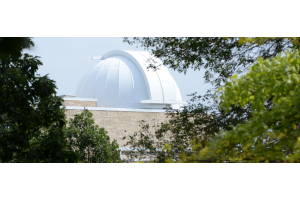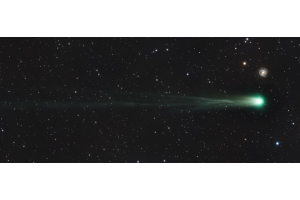
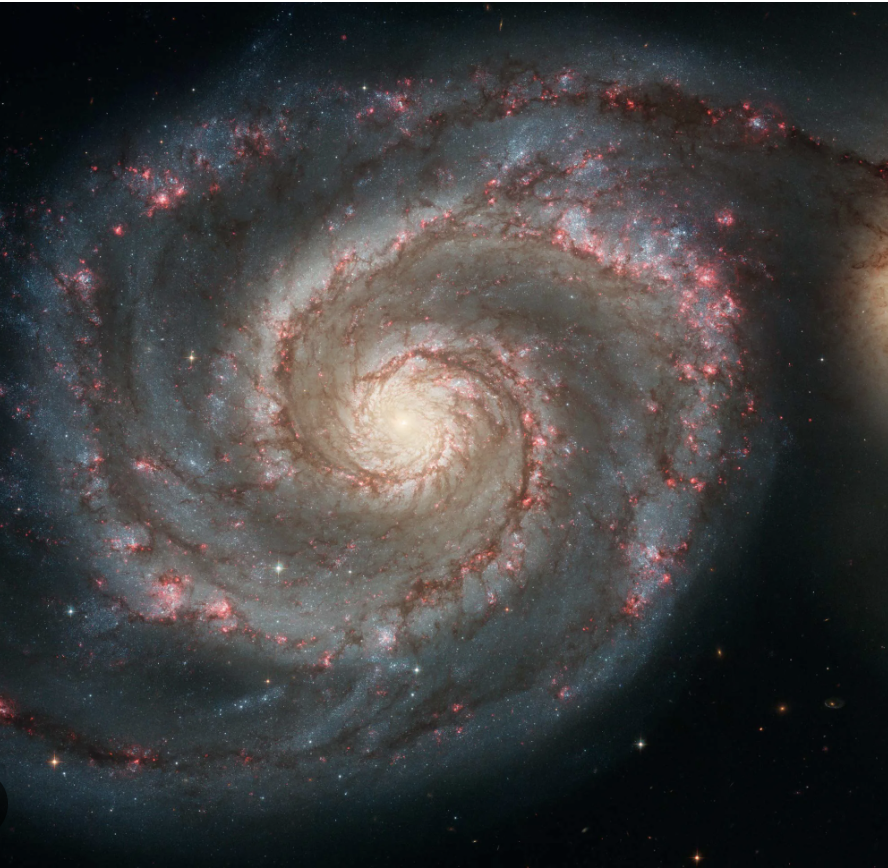
Image credit: NASA, ESA, S. Beckwith (STScI) and the Hubble
Heritage Team (STScI/AURA)
M51 - The Whirlpool Galaxy
Of all the galaxies visible in the spring sky, perhaps none are as frequently photographed as the Whirlpool Galaxy. Charles Messier himself discovered it in 1773 and added it to his famous catalog of comet-like objects, but it was William Parsons who first noticed its spiral structure. It glows at magnitude 8.7, and can be detected with binoculars under dark skies, but is best observed with a telescope.
To find it, start at Alkaid, at the end of the Big Dipper’s handle, then look for 24 CVn two degrees to its southeast. M51 lies another two degrees southwest of that star and marks one point in a flattened isosceles triangle. Small scopes will show a dark, circular, hazy patch, but you’ll need a scope of 250mm or more to detect any texture or to see the arms that give the galaxy its name. Be sure to look out for NGC 5195, the smaller galaxy with which it is interacting.
OUR NEAREST NEIGHBORS
With Venus, Jupiter, and Uranus all lost within the glare of the Sun, May is not the best month for the planets, especially as you’ll need to rise early to see the others. First of these is Saturn, which is rising over the eastern horizon with the predawn twilight at the start of the month. Realistically, it’s too low to be telescopically observable, but look out for a crescent Moon nearby on the 3rd and 4th, and the last quarter Moon just a degree away on the 31st. Similarly, Neptune is pushing away from the Sun, but is too faint and too low to be readily detected. Mars is 14 degrees east of Saturn at the start of the month and is best observed with the naked eye from about 45 minutes before sunrise. You’ll find a crescent Moon to its right on the 4th and then to its left on the 5th. Mercury reaches greatest elongation on the 9th, but will only be about 7 degrees above the eastern horizon 15 minutes before sunrise. This makes it challenging, but look for a crescent Moon to its left on the 6th. The Moon is new just after midnight on the 8th for those on the east coast, and then the Full Flower Moon is on the 23rd.
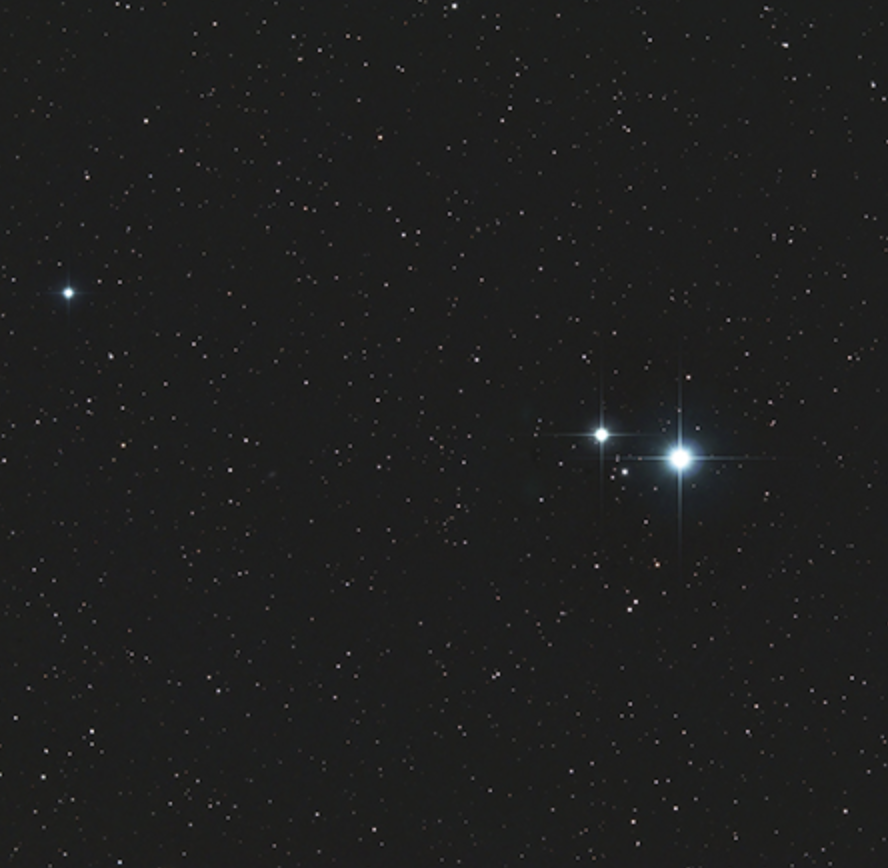
Image credit: Greg Parker via AstronomyNow.com
Mizar & Alcor
Here’s an easy double that everyone can enjoy. To the naked eye, Mizar - the middle star in the handle of the Big Dipper - appears to have a tiny companion, Alcor, beside it. Take a look at Mizar with a telescope, and you’ll see it split into two blue-white stars.

Image credit: NASA, ESA, STScI and A. Sarajedini
M3
One of the finest globulars in the northern celestial hemisphere, M3 suffers from lying in a barren area of sky about midway between Arcturus and Cor Caroli. Telescopes will show a tightly compressed bright core surrounded by a halo of stars.
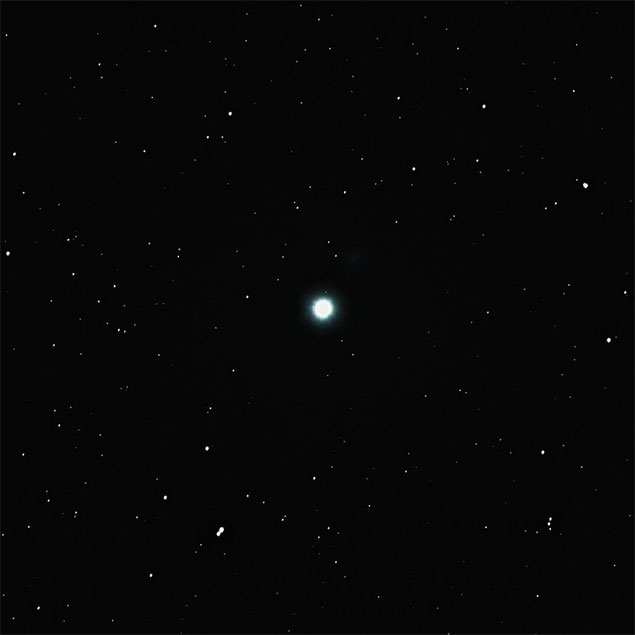
Image credit: Joe Matthews via AstroBin
Cor Caroli
A fine double star for almost any scope, it’s easily split at low magnification into a white primary and a creamy, fainter secondary.

Image credit: NASA
M101 - The Pinwheel Galaxy
Like M51, the Pinwheel Galaxy can be found within the same binocular field of view as Alkaid in the Big Dipper. Mid-sized scopes of 250mm or larger will show its spiral arms, while larger scopes will also reveal some texture.
STELLAR CONCEPTS
The Big Dipper: The Big Dipper is formed from the seven brightest stars of Ursa Major, the Great Bear. As such, contrary to popular opinion, the Big Dipper is not actually a constellation itself, but rather an asterism, which can be thought of as being a pattern of stars within a larger constellation. While known as the Big Dipper in North America, it is also commonly known as the Plough in the United Kingdom and the Great Wagon in Germany.







